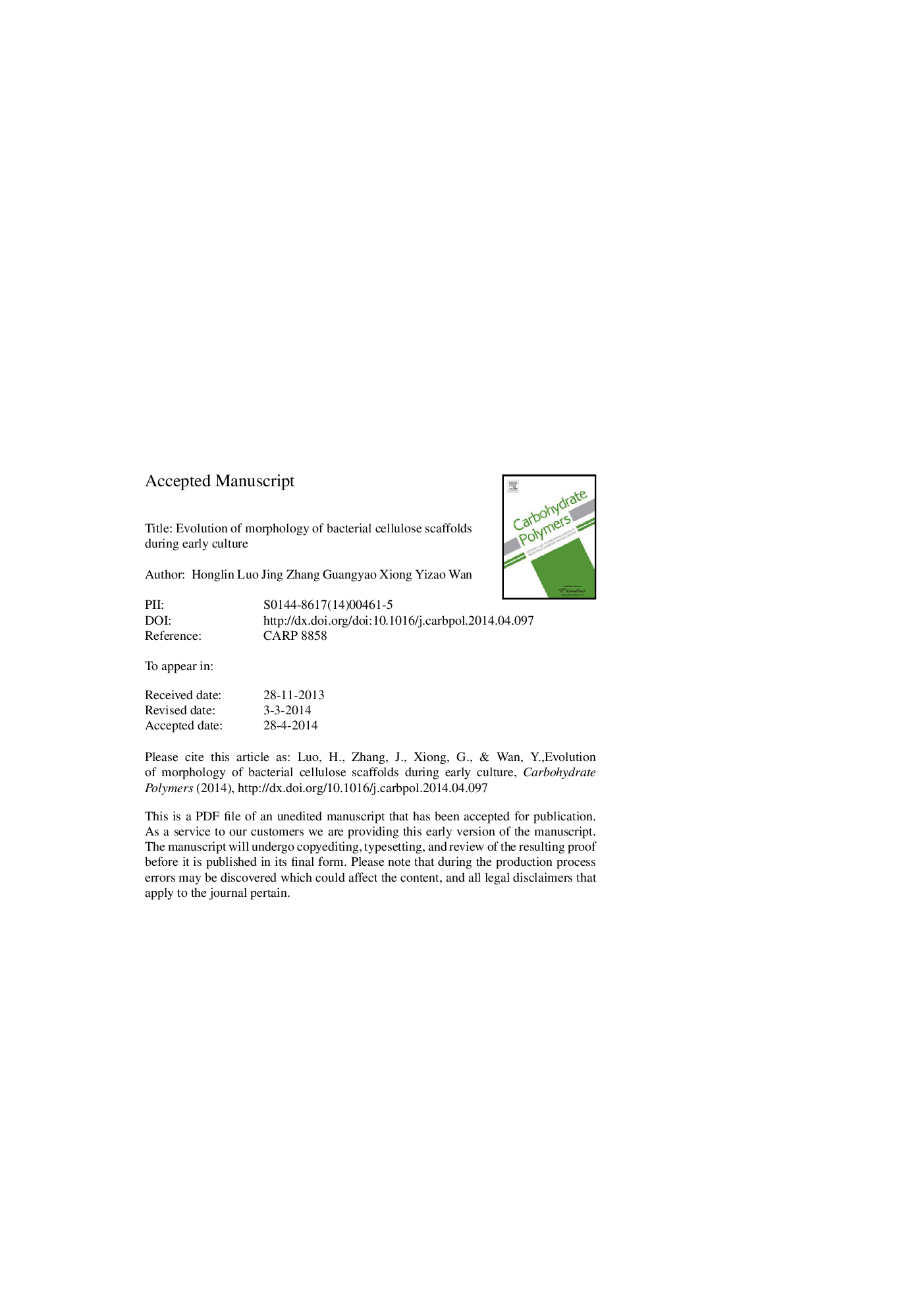| Article ID | Journal | Published Year | Pages | File Type |
|---|---|---|---|---|
| 7791815 | Carbohydrate Polymers | 2014 | 31 Pages |
Abstract
Morphological characteristics of a fibrous tissue engineering (TE) scaffold are key parameters affecting cell behavior. However, no study regarding the evolution of morphology of bacterial cellulose (BC) scaffolds during the culture process has been reported to date. In this work, BC scaffolds cultured for different times starting from 0.5Â h were characterized. The results demonstrated that the formation of an integrated scaffold and its 3D network structure, porosity, fiber diameter, light transmittance, and the morphology of hydroxyapatite (HAp)-deposited BC scaffolds changed with culture time. However, the surface and crystal structure of BC fibers did not change with culture time and no difference was found in the crystal structure of HAp deposited on BC templates regardless of BC culture time. The findings presented herein suggest that proper selection of culture time can potentially enhance the biological function of BC TE scaffold by optimizing its morphological characteristics.
Related Topics
Physical Sciences and Engineering
Chemistry
Organic Chemistry
Authors
Honglin Luo, Jing Zhang, Guangyao Xiong, Yizao Wan,
